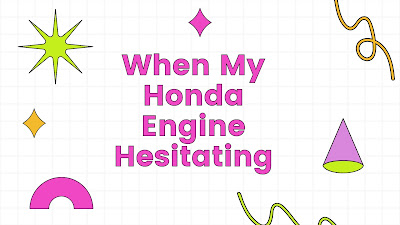So your Honda Engine is hesitating at low idle? Is your idle hunting or uneven? Maybe you don't have much power until 3,000 RPM? Although there are some complex causes for idle problems, there are also a few fairly simple reasons that might be the cause. By running through the diagnostic steps below, you could save yourself a costly trip to the mechanic.
The first thing to do is ask yourself a couple questions. Have you done any work on the cooling system? Have you replaced any ignition components? A simple mistake in servicing these systems can cause a poor idle. And if your check engine light (CEL) is on, this may also indicate that a sensor might be bad, causing the engine to compensate by automatically adjusting the idle or air/fuel mixture.
Check the spark
Corrosion at the spark plug terminals may cause them to not produce a spark, or cause the engine to misfire. In addition, any faults in the ignition coil or distributor may cause the same issues. Follow these steps to diagnose your engine's spark:
- Pull the electrical feeds to the injectors.
- Obtain an extra spark plug, and gap it properly.
- Pull one of your spark wires from the spark plug end.
- Use a deep socket and ratchet to remove the spark plug. Then, insert your new plug.
- Put on rubber gloves.
- Hold the plug's threads against a point on the head where it will be grounded (e.g., a clean metal spot on the head).
- Have a friend crank the engine, and observe your plug for spark. It should be a regular bright white flash.
- An irregularity or a spark of any other color (blue, orange, or yellow) could be a sign of ignition coil or distributor trouble.
- Follow this procedure with the remaining spark plugs.
Replace the spark plugs with high-quality Honda-approved plugs like NGK or Nippon Denso. Replacement plugs start at $12, and run up to $50 for performance plugs. Inspect the ignition coil, distributor cap, and rotor. Consider replacing them as well if there are signs of wear or faultiness.
Clean the throttle body
A gummy intake valve will stick, and restrict the amount of air getting into the engine. It will also cause your throttle response to be uneven and sticky. To diagnose the throttle body:
- Let the engine cool.
- Remove the hose between the air box and the front of the throttle body.
- Apply a small amount of brake/carburetor cleaner to a rag, and remove the grease, dirt, or oil from around the intake valve.
- Check for proper throttle movement and operation. Then, re-assemble.
Check for a vacuum leak
Vacuum leaks can cause a lean fuel mixture by allowing too much air into the intake. To compensate, the engine computer will enrich the mixture, causing uneven or surging idle. To check for a vacuum leak:
- Wait for your engine to cool down.
- Start the car, and with a can of carburetor cleaner, spray small amounts in the areas where there may be leaks. For example, spray at and around the PCV (positive crankcase ventilation) valves as well as the vacuum hose connections.
- Listen for changes in the idle as you spray. If the idle changes, you've likely found a vacuum leak.
- Repair or replace hoses and fittings as needed.
Bleed the cooling system
Air in the cooling system is another common source of idle issues in Honda vehicles. If you've recently opened the cooling system to replace a part or change out the coolant, verify that you have no coolant leaks. Then, bleed the system for any air that might be trapped. To bleed cooling system:
- Turn the heat in the car up to its highest setting.
- Loosen your bleeder screw.
- Add coolant until the fluid comes out the bleeder valve.
- Run the engine until the thermostat opens.
- Add coolant as needed.



